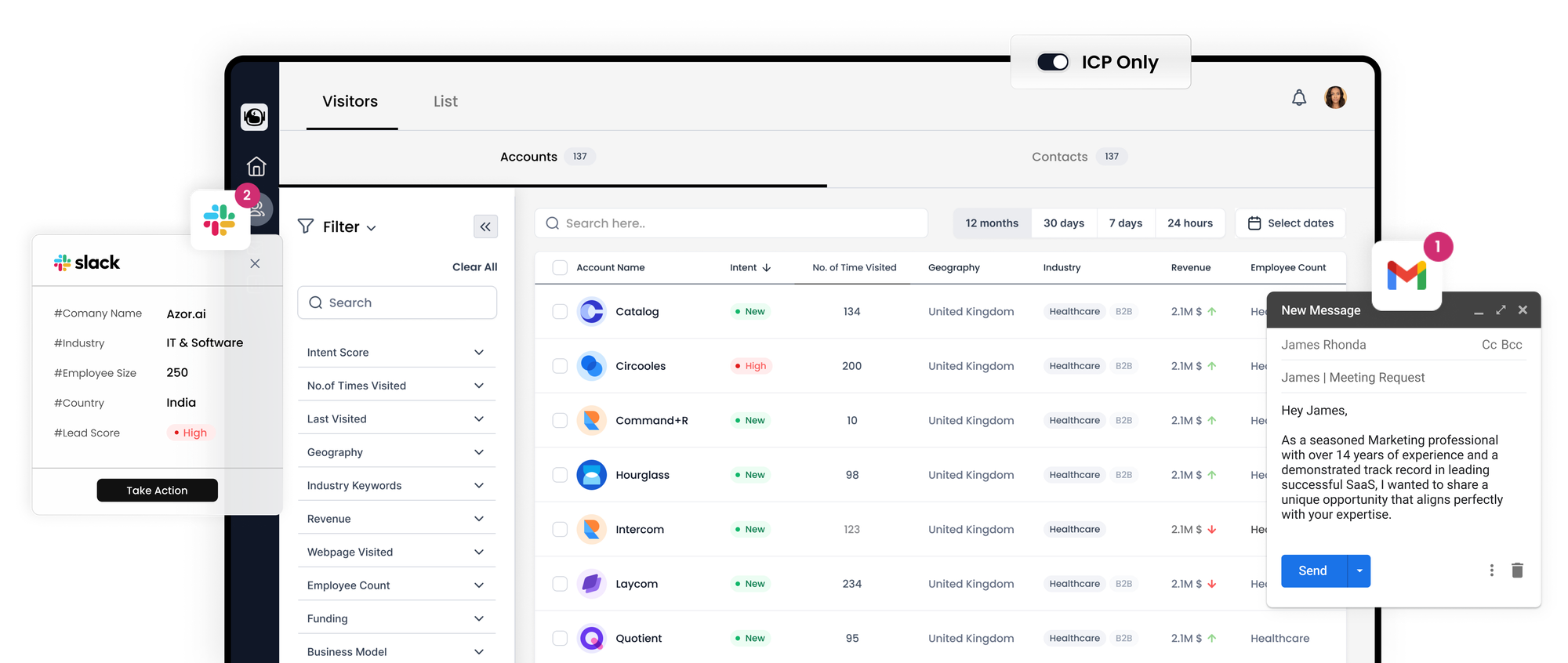Integrating Demand Generation with Lead Generation for B2B Marketing Success

Understanding the interplay between demand generation and lead generation is essential for a holistic B2B marketing approach. Rather than viewing these strategies as opposites, it's crucial to recognize that an optimized sales funnel integrates both, leveraging their strengths to nurture consumer interest and convert it into tangible sales opportunities.
Demand and lead generation are not adversarial concepts; instead, they are complementary aspects of a well-rounded marketing plan. Demand generation lays the groundwork by raising brand awareness, while lead generation capitalizes on that awareness to cultivate prospective customers.
For B2B marketers aiming to maintain a consistent flow of actionable, high-quality leads, the transition from thinking in terms of 'demand generation versus lead generation' to 'demand generation plus lead generation' is vital. The logic is straightforward: effective lead generation thrives on the fertile ground prepared by robust demand generation. This article will unpack the nuances of demand generation and lead generation, identify their distinctive features, outline effective strategies for each, and explore how marketing tools can be deployed to construct a robust customer acquisition framework.

Demystifying Demand Generation
Demand generation encompasses a variety of marketing initiatives aimed at sparking interest and elevating brand profile.
These initiatives might include diverse tactics like insightful content creation, strategic advertising, interactive webinars, or engaging events—all designed to provide value to the audience. The ultimate aim of demand generation is to acquaint potential customers with the brand and shepherd them down the sales funnel.
Essential Elements of a Demand Generation Blueprint
Demand generation contributes to the 'Attention' and 'Interest' phases within the AIDA model (Attention, Interest, Desire, Action). As such, your demand generation blueprint should primarily concentrate on bolstering brand recognition and generating excitement around your offerings.
Essential Aspects of a Demand Generation Blueprint
Crafting a robust demand generation strategy involves a multifaceted approach. Here are five critical elements to incorporate:
1. Leverage Analytical and Amplification Tools
Utilize a sophisticated tech stack that not only broadens your reach but also improves the impact and assessment of your demand generation campaigns, allowing you to scale up efficiently.
2. Establish Precise Objectives
Set clear, targeted objectives for your demand generation efforts, emphasizing the enhancement of your brand's visibility. Consider metrics like brand recognition, increased web traffic, and your brand's voice in the marketplace.
3. Prioritize Brand Awareness
In a competitive market, sustaining brand awareness is crucial for a steady influx of leads. Effective brand awareness strategies should leave a lasting, favorable impression that resonates with your audience and builds trust in your brand.
4. Diversify with Innovative Marketing Tactics
Attract attention by integrating unconventional marketing techniques that align with your brand's identity. Tactics such as influencer partnerships, experiential events, product placements, guerrilla marketing, lifestyle branding, and branded content can elevate brand visibility.
5. Offer Value-Driven Content
Develop content that provides genuine value, such as educational webinars, insightful blogs, engaging podcasts, informative videos, eBooks, in-depth case studies, and detailed industry reports. By doing so, you assert your brand's expertise and thought leadership.
Metrics for Gauging Demand Generation Success
To effectively monitor your demand generation initiatives, focus on a variety of key performance indicators. Here’s a list of significant metrics to keep an eye on:
- Web Traffic Volume: Measure the number of visitors to gauge interest and digital presence.
- Cost Per Acquisition (CPA): Evaluate the cost-effectiveness of converting interest into leads.
- Customer Acquisition Cost (CAC) per Channel: Analyze the investment required to acquire a customer through each marketing channel.
- Growth in Pipeline: Track the increase in potential sales opportunities over time.
- Social Media Engagement: Observe interactions on social platforms to assess brand resonance.
- Content Engagement: Scrutinize how well your content resonates with your audience and fulfills their information needs.
- Brand Sentiment: Understand public perception and emotional response toward your brand.
**Understanding Lead Generation in B2B Marketing**
Lead generation is an array of marketing tactics aimed at nurturing consumer interest in a brand to the point where they become customers. It's about engaging consumers early in their buying journey and fostering that interest until they're ready to make a purchase.
The essence of lead generation is to cultivate potential customers by capturing their information, thereby enabling the sales team to convert them into actual sales. Additionally, the data gathered from lead generation efforts can help shape an Ideal Customer Profile (ICP), which is a template for recognizing prospective leads who are more likely to buy.
Essential Facets of a Lead Generation Framework
A lead generation framework is critical for converting interest into sales and should encompass the following key elements:
1. Lead Capture System
An effective lead capture system is vital for channeling potential customers into your sales funnel. Utilizing web forms on landing pages is a common method for collecting visitor information. Streamlining web forms can enhance their efficiency, making it easier to capture lead data.
2. Crafting Compelling Lead Magnets
Lead magnets are incentives offered in exchange for a potential customer's contact details. These could be trial offers, gated content like whitepapers or e-books, discounts, or special deals. They're essentially your brand's 'hook' to gather contact details and permission to engage further.
3. Landing Page Optimization
The effectiveness of your lead magnets is often determined by the quality of your landing pages. These are the web pages where potential leads 'land' after clicking on a call to action. They should be designed to minimize distractions and clearly guide visitors towards providing their information.
4. Social Media Strategies
Social media platforms are indispensable for lead generation, offering both paid and organic means to promote your brand. Effective social media strategies should integrate calls to action that guide followers towards becoming leads.
5. Implementing Marketing Automation
Marketing automation is about creating systems that can extend your marketing reach and analyze the impact of your lead generation initiatives. Automation can streamline repetitive tasks, ensuring no potential lead slips through the cracks.
6. Lead Scoring Techniques
Lead scoring allows you to prioritize leads based on how they interact with your brand. It's a way to assess the likelihood of a lead becoming a customer based on their behavior and engagement level.
7. Focusing on Remarketing
Remarketing is a technique to re-engage individuals who have previously interacted with your website. By displaying targeted ads across different platforms, you can recapture the attention of those who have shown interest in your brand, providing them with tailored offers that could convert them into leads.
Crafting a Lead Generation Strategy
Developing a lead generation strategy involves aligning these components to work in concert. It's about transforming someone's curiosity about your product into a strong desire for the solutions you offer, culminating in a sale. Each element plays a part in moving a lead from casual interest to committed customer.
Metrics to Gauge the Success of Lead Generation Initiatives
Various metrics are utilized to measure the success of lead generation efforts, although these may differ from one organization to another. Commonly tracked lead generation metrics include:
- Volume of high-potential leads
- Lead-to-customer conversion rates
- Total value generated from leads
- Cost per customer acquisition
- Rate of sales conversions
- Time taken to respond to leads
- Click-through rates for campaigns
- Ratio of Marketing Qualified Leads (MQL) to Sales Qualified Leads (SQL)
- Classification and engagement levels of leads
Categorizing Leads
Leads can be segmented based on their interaction with your brand and their stage in the buying cycle:
- **Marketing Qualified Lead (MQL):** These are individuals who have interacted with your marketing efforts but are not yet ready to receive a sales pitch. They may need further nurturing before progressing down the funnel.
- **Sales Qualified Lead (SQL):** These are individuals who have taken steps that explicitly indicate their readiness to consider a purchase, such as requesting a product demonstration or viewing pricing information.
- **Product Qualified Lead (PQL):** These are individuals who have used your product (often through a free trial or a scaled-back version) and have taken specific actions that signify a strong buying intent, actions often consistent with those of your existing paying customers.
Understanding the Interplay Between Demand and Lead Generation
The primary distinction between demand generation and lead generation lies in their focus areas within the marketing funnel. Demand generation is about crafting brand awareness and piquing interest, while lead generation is about converting that awareness into actionable prospects.
Demand generation is an upper-funnel activity that captures the audience's attention and kindles an interest in your offerings. Lead generation, on the other hand, concentrates on transforming this interest into concrete leads by collecting prospect information.
When combined, demand and lead generation strategies can drive the growth of your sales pipeline, ensuring a smooth transition from initial awareness to eventual customer acquisition.
Harmonizing Demand and Lead Generation in Business Strategies
Instead of choosing between demand or lead generation, businesses should look at how these methods can synergistically generate a smooth customer acquisition process. These strategies should be used in concert, feeding off one another to convert general consumer interest into solid leads and, ultimately, customers.
For instance, a company might generate demand by offering an insightful eBook that captures interest. To capitalize on this, they could implement a lead generation strategy by distributing the eBook in exchange for email addresses, thereby transforming interested readers into tangible leads.
In practice, a successful blend of demand and lead generation requires continuous refinement. Businesses must engage in ongoing experimentation, adjusting and enhancing their strategies to cultivate and convert leads effectively.
